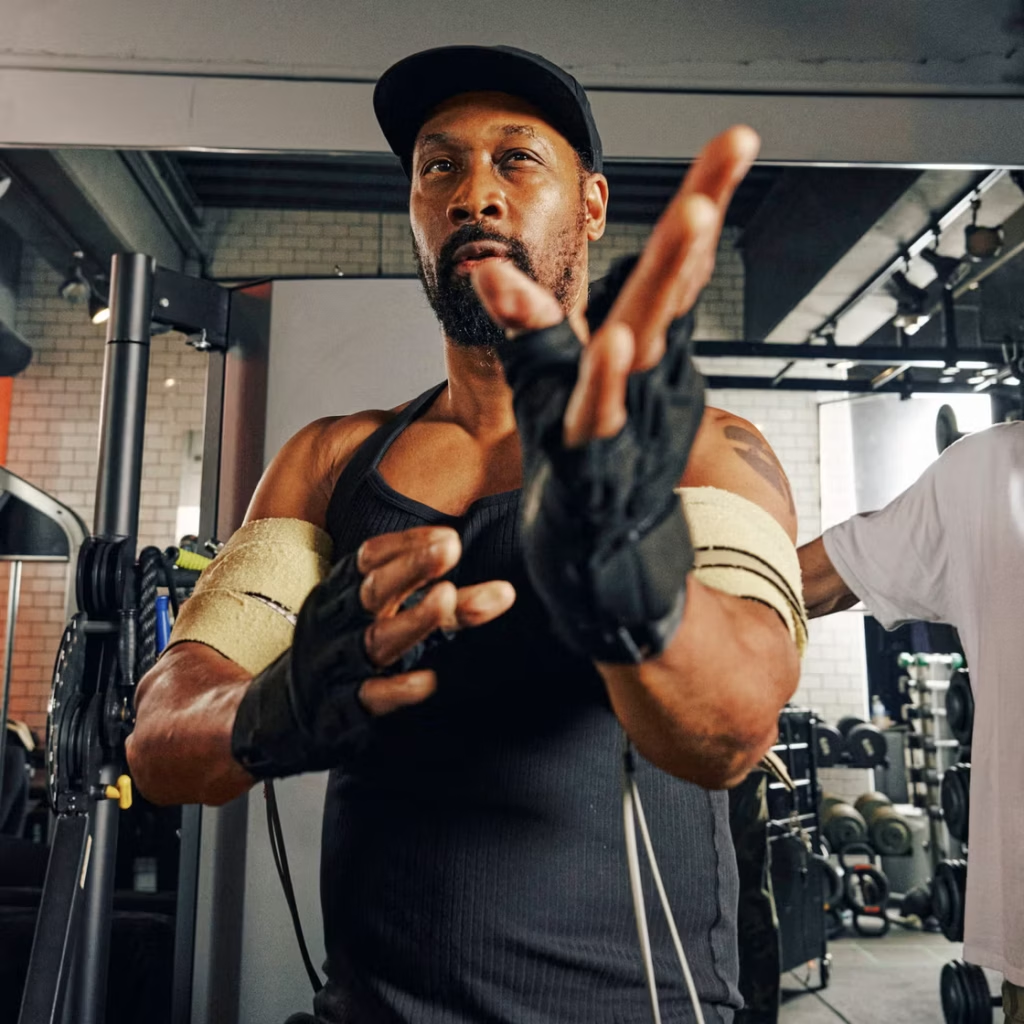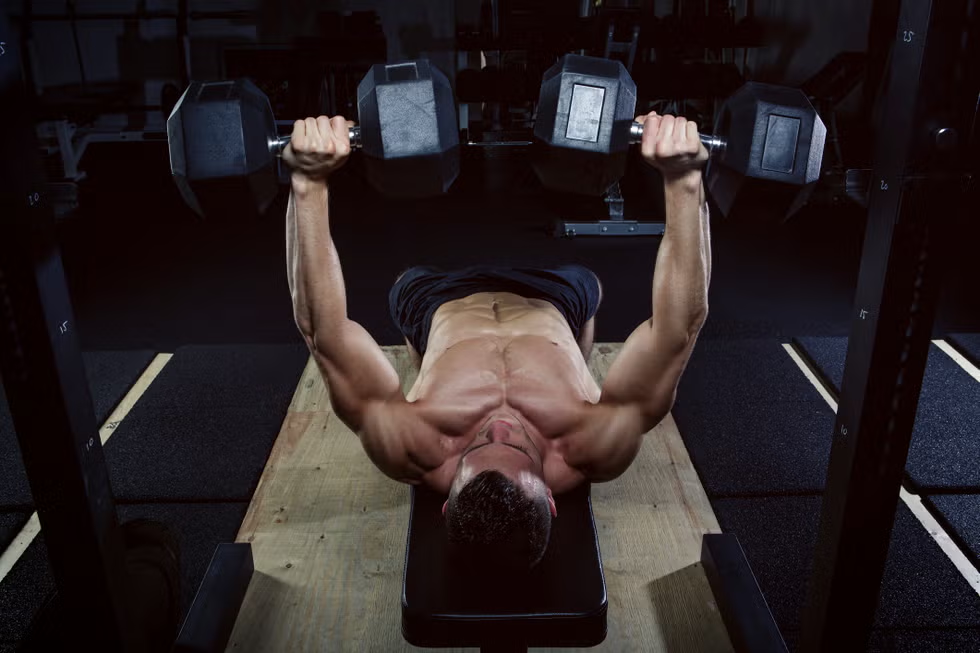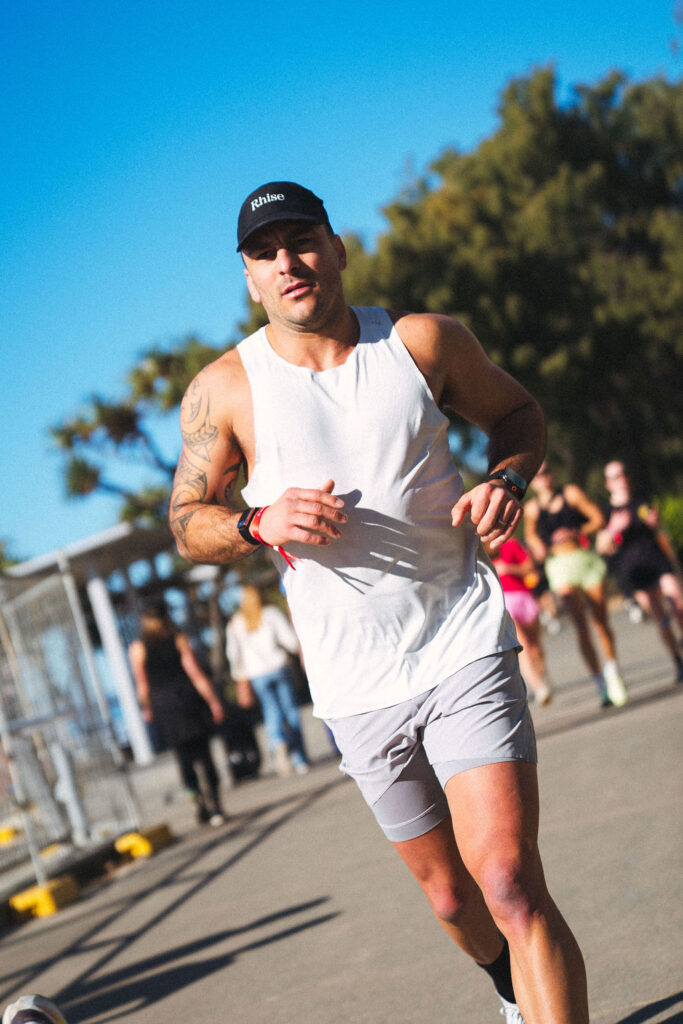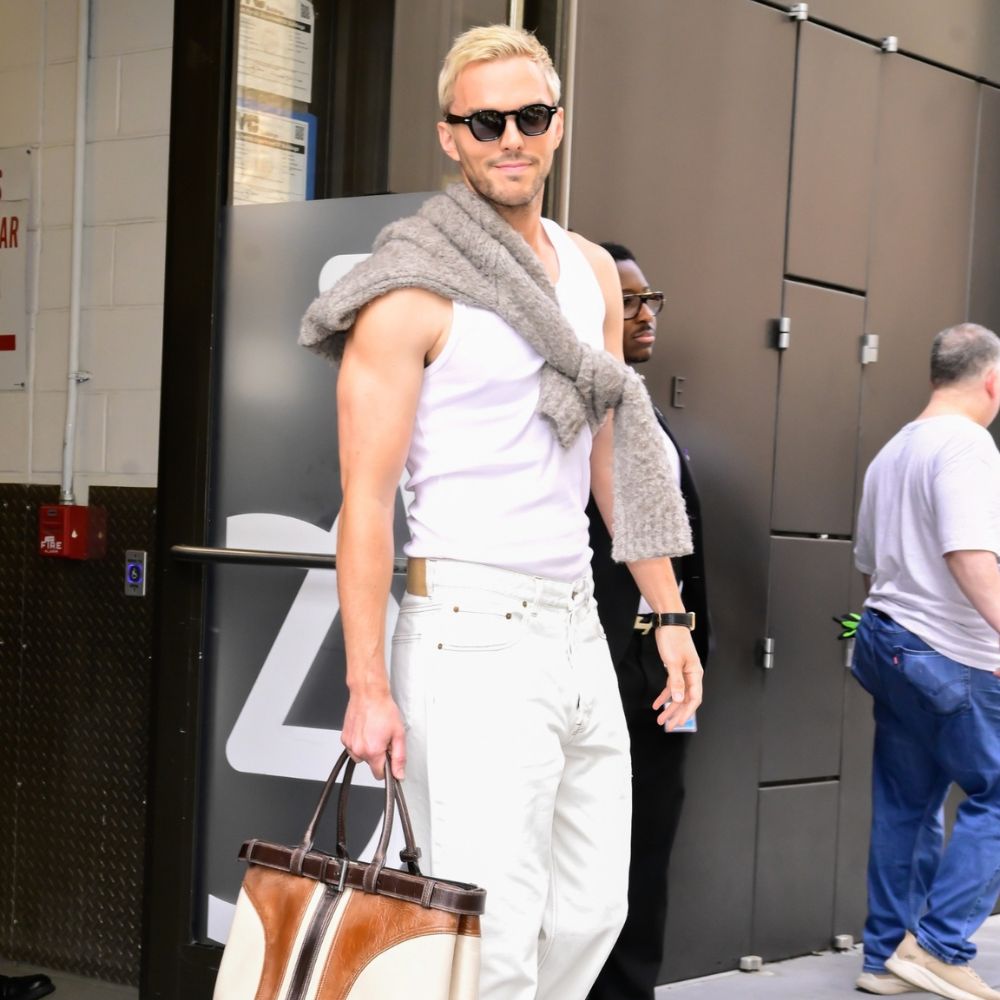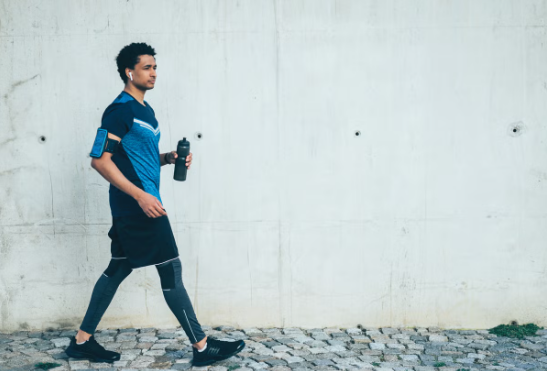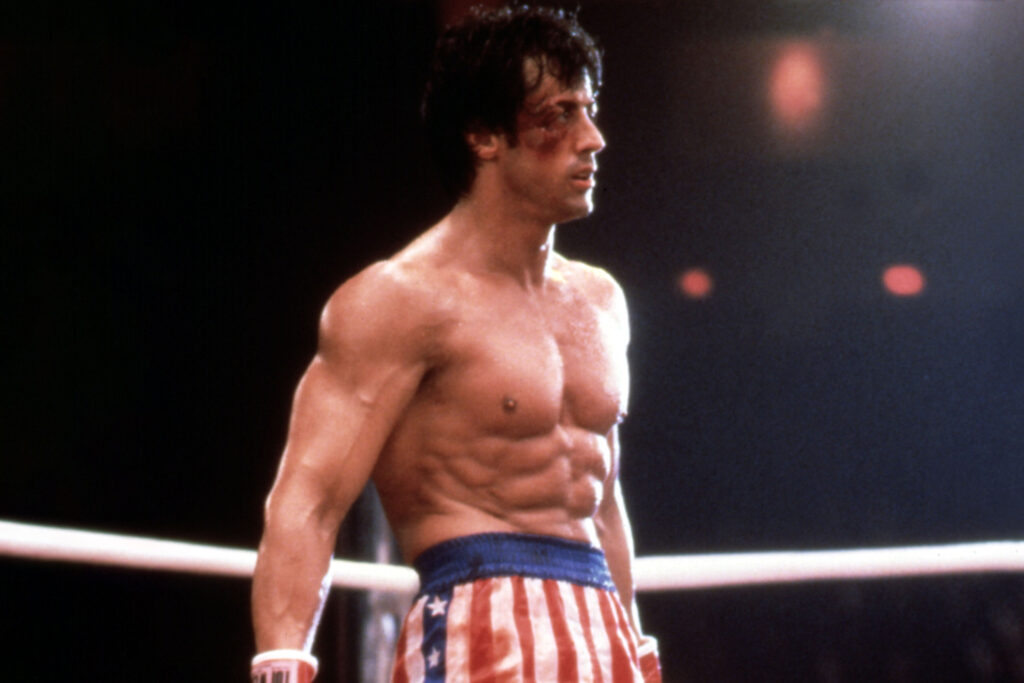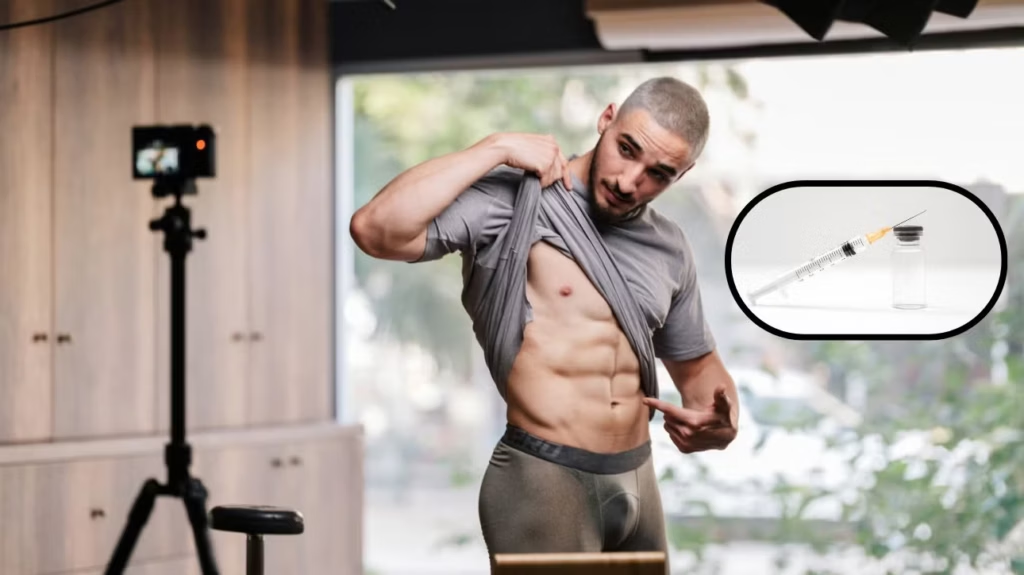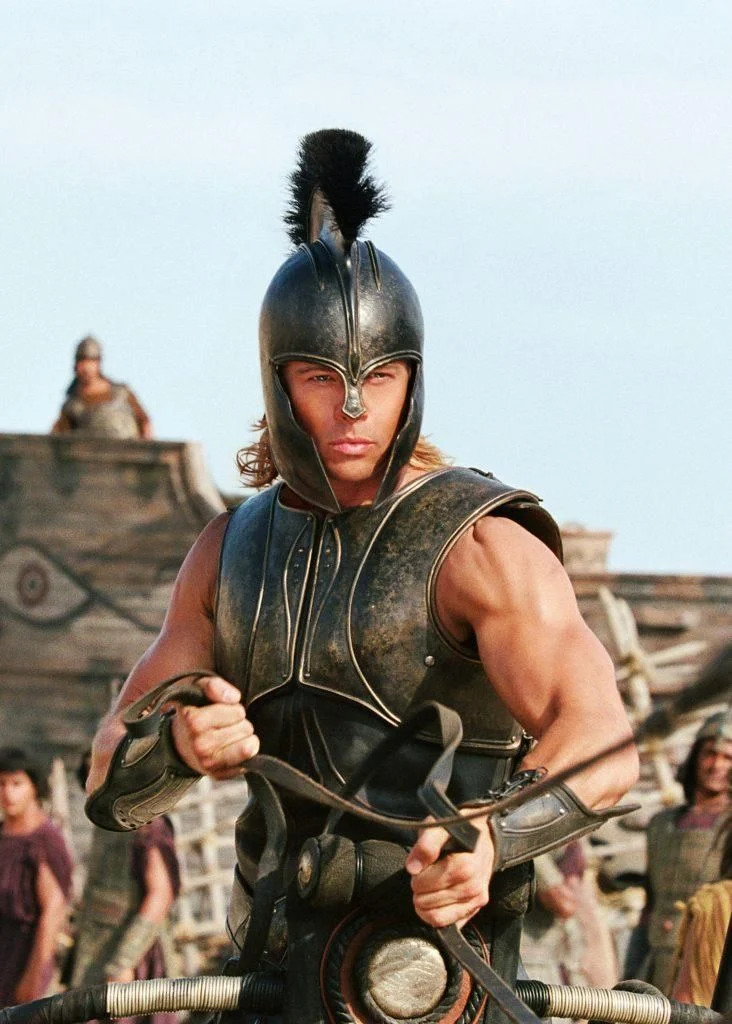Pablo Schreiber has had a weird career, and that’s the way he wants it. The Canadian-born actor had his first big break as Nick Sobotka, the dock worked-turned-informer in the second season of The Wire, and has since played a drug-dealing romeo in Weeds, Corrections Officer “Pornstache” in Orange Is the New Black, a serial rapist and Olivia Benson nemesis in Law & Order: Special Victims Unit, and a hard-knock leprechaun in American Gods. Even at a towering 6’5″, he’s tended to go the chameleonic character actor route rather than take up an action hero mantle. So it shouldn’t be a surprise that Halo, the Paramount+ series based on the massively popular video game franchise, has been getting notice in the second half of its first season for its character-focused storytelling after initially mixed reviews, with particular praise going to Schreiber’s deeper dive on the role.
As the super soldier Master Chief, Schreiber was packed into a 50-pound armor suit for much of his shoot days, which could stretch up to 14 hours long. “Shooting was an incredibly grueling physical challenge,” he told Men’s Health. “You’re working out more and eating more than anyone would want to.” But as much work as Schreiber has put into becoming an absolute unit for the role, he’s put more into studying all the lore of the Halo extended universe in order to make Master Chief as compelling a character as possible in the crowded peak content era. Now, as the first season comes to a close this week, we talked to Schreiber about getting into Spartan shape, acting while ensconced in armor, and refusing to always play the big guy or the bad guy.
Men’s Health: Playing Master Chief often means having to act while completed covered head-to-toe in armor. How did you approach acting through body language—the way you move and carry yourself—to convey the character of John-117 both in and out of the suit?
There’s a certain technical aspect, obviously, to acting within the suit. I think you get a lot for free from an audience when you cover up the character’s face; the audience brings a lot to the table by projecting their own feelings and emotions onto the character. You have to be aware of that as an actor. So there’s a specificity of movement—your presence, the subtleties of your body language—that becomes very important when you’re acting in those situations. When you’re covered up in that way, from head to toe, your performance has to be all the more truthful for it to come through.
I think the moment at the end of the first episode where he gets the helmet off was crucial to establishing what we wanted to do going forward. The season is as much about exploring Master Chief, the soldier as it is about exploring John, the human being. So there’s that tension, that push-and-pull between the two.
The Master Chief armor you wore weighed 50 pounds. Was it a challenge to move around in, let alone have to shoot fast-paced action scenes in?
It’s a challenge for sure. The appearance of the Chief is so iconic and such a huge part of his identity. So we had to nail it with armor that felt authentic. But while their armor is crucial to the success of the Spartans as guardians of the human race, the problem is that the armor I wear obviously isn’t future tech, and it doesn’t actually aid in making me superhuman. So figuring out how to manipulate it in a way that appeared nimble was a huge part of the challenge.
You bulked up a lot for the role. How did you approach that?
I’m naturally a thinner body type, I have a pretty fast metabolism. So it’s a challenge for me to put on a lot of muscle and hold on to it. And the nature of the role requires a certain body type, a physique that’s impressive. So I had to train a ton, and I have a great trainer, Eddie Raburn, who I’ve been working with since [2018 heist movie] Den of Thieves. We attacked this one in some familiar ways and some new ways. I’m 44 years old now, and every day that passes, things get a little bit harder, so there’s a lot more focus on recovery and mobility in addition to the usual routine of just eating a lot and lifting a lot of weights.
You said that telling the story of John, the guy in the Master Chief armor, was as important to you as anything else. How much Halo lore did you consume to prepare for that?
All of it. I’ve been exposed to all of the Halo mythology that’s been established over the past 20 years. There’s so much that’s written about the Master Chief in novels outside of the in-game experience. He’s sort of held up as a symbol and kept kind of opaque in the games, because as a gamer you’re meant to fill in all the subtleties of his personality with your own. But in a lot of the alternate media that’s been put out around the game, the Chief is explored in a deeper and more full way. So making myself aware of all that was the first job.
Were you aware of just how much Halo mythology there is outside of the games?
I didn’t have concept of it. I had played a little a handful of times, but only in multiplayer mode. I hadn’t played it in campaign mode, so I wasn’t aware of it as a story franchise. And what blew me away is learning just how much of a story there is. There are many years of established mythology through multiple media streams—not just the mainline games, but novels, animated shorts, live action features. There’s just so much Halo-related content out there. So there’s quite a treasure trove of information and mythology, and it’s really rich and well thought out, so it definitely felt like getting a huge head start before I even started shooting the show.
This project has been gestating for years and has gone through several forms before finally making it to Paramount+. Did you feel any pressure leading a franchise that’s been so long in the making?
I mean, I don’t have a real interest in doing something if it’s just, you know, IP service. For me, the only reason to make a television show at this time in history is to make something that can live in the current TV landscape and can hold up amid all the different forms of content we have at our disposal. I don’t just want to make a “video game adaptation”—I want to make something that can transcend genres and just be considered great television. Whether we’ve completely hit that mark in the first season is not as important to me, because I think the first season really does establish the character that is going to take you through multiple seasons, which gives me the opportunity to keep pushing this thing and making it the best show that it can be. And to that end, we have a new showrunner coming on for the second season who’s an incredibly talented writer. I’m already seeing scripts for the second season that really just keep taking everything to a deeper and more interesting and higher level. So I’m excited for that going forward.
You’ve had a really varied career. Even now, you just had Candy—a true crime drama in which you play a suburban husband having an affair before his wife is murdered—air on Hulu while playing the Master Chief over in Halo. Have you ever been afraid of being pigeonholed?
Absolutely. I mean, I think my whole career has been a reaction to not wanting to get pigeonholed. It’s so easy as a larger guy for people see you and make it your identity. But everybody has something that they bring into the room that people instantly make assumptions about or want to capitalize on and use. It’s just always been my goal to stay away from anything that feels repetitive. That’s always been my mantra: Don’t repeat yourself, don’t repeat yourself. There was a moment around Orange Is the New Black and Law & Order: SVU where the idea of me as a “bad guy” was threatening to crystallize, and it took a concerted effort to say, “No, I’m not going to be that, I’m going to do something different.”
Then I spent the last two years working on Halo, this action-packed science fiction project where I played a muscular military hero, and in my down time, I went to Atlanta and shot Candy. The joy was getting to work with Robin Veith, who I’ve worked with a couple of times [on SVU and the FX boxing drama Lights Out]. She writes these amazing scripts, and the other actors in it are amazing too—Melanie Lynskey is having quite a moment with with Yellowjackets and she’s such an amazing actress, and Jessica Biel is a real force of nature. That I got to chase Halo with Candy was really a highlight because I just have a strong desire to keep changing things up so that I leave behind a legacy of a really wide variety of work.
This article was first published on Men’s Health US.








